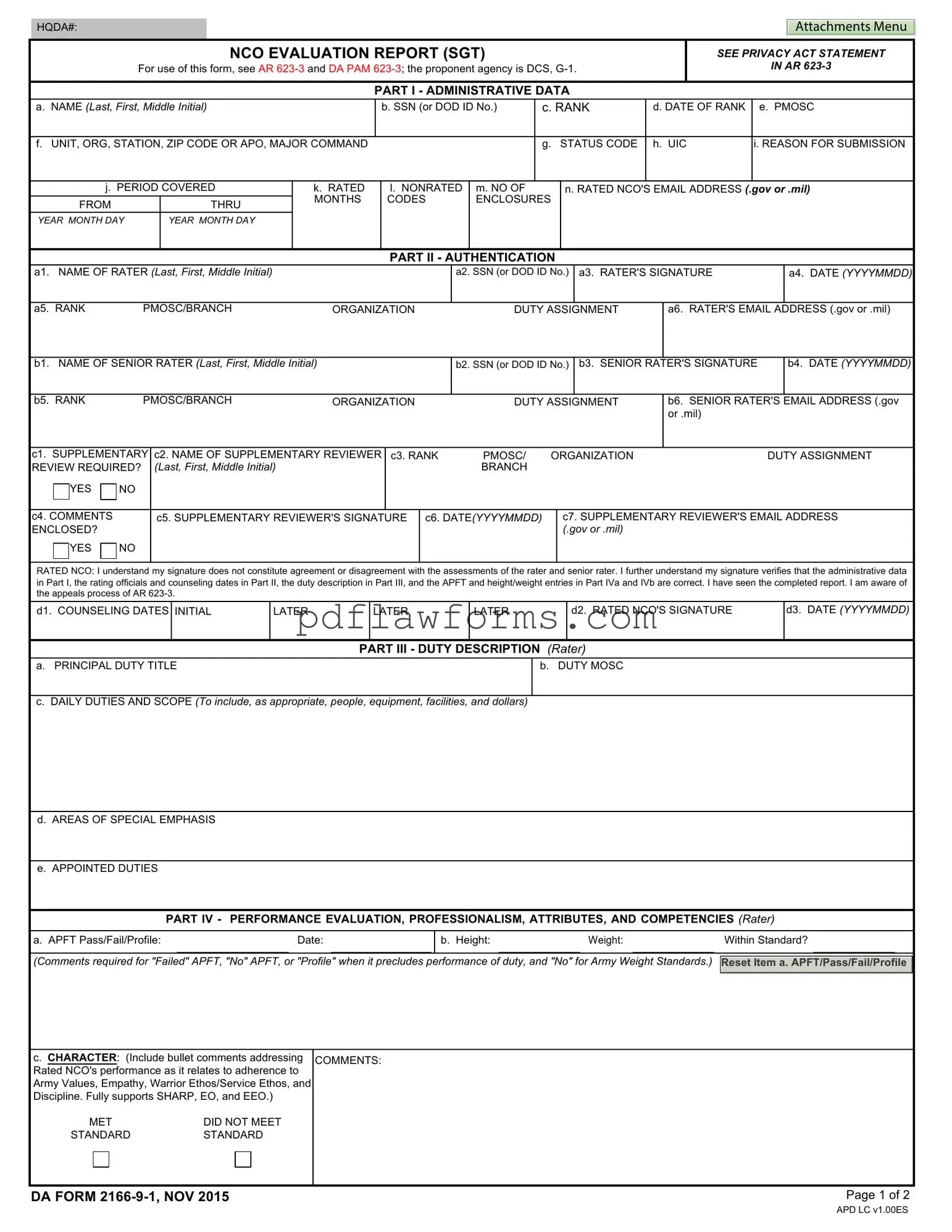The DA 2166-9-1 form is an essential tool for evaluating the performance and potential of non-commissioned officers (NCOs) in the U.S. Army. This evaluation report, specifically designed for sergeants, plays a critical role in the professional development of military personnel. It encompasses various sections that capture vital administrative data, including the NCO's name, rank, and unit information, as well as the evaluation period. The form requires input from multiple rating officials, including a rater and a senior rater, ensuring a comprehensive assessment. Each section is meticulously structured to evaluate the NCO's duty performance, character, presence, intellect, leadership, development, and overall achievement. The rater provides detailed observations, while the senior rater assesses the NCO's potential relative to peers. Additionally, the form includes a counseling component, allowing for constructive feedback and acknowledgment of the NCO's understanding of the evaluation process. This multifaceted approach not only promotes accountability but also fosters a culture of continuous improvement within the ranks.
